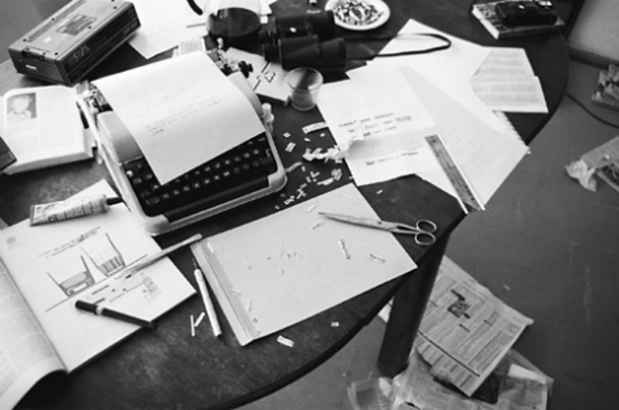"After October" Exhibition
Elizabeth Dee

This event has ended.
In the lead up to November's American general election, the use of the word 'change' has been popular with both of the major political parties. In order to help establish their respective candidate's willingness and ability to bring about reform, it has been employed to such an extent that it has become nearly devoid of meaning. But once the new President has been chosen, perhaps through the democratic process of voting, will the election have served as the catalyst for this kind of massive change, whatever it might be? Whether or not ‘change’ ends up as simply a rhetorical flourish, the event of the election would seem to present a platform to reconsider the dynamic between politics and art production, and the affinity between strategies of refusal and art, as well as the ways in which art might be able to contribute to efforts of revolutionizing society.
When operating through covert channels, could specific works of art, by forming a distinction between the representations, depictions (that which is made visible) and the [political] content which serves as their basis, simultaneously challenge the, now seemingly shaky, dominance of capitalism while also resisting established modes and discourses through which the 'political' makes itself manifest in art? Is there a way to do so without resorting to the didacticism of much of the art deemed 'political'? How do we find new ways to say 'no,' to form a suggestion for an alternative, both politically and artistically?
The modernist utopian project to reshape the ways in which we live and inhabit society, exemplified by the architectural promises laid out by social housing projects, world fairs and official houses of culture, is now generally agreed to have failed. The student strikes of the 1960s, as well as other traditional forms of struggle, instead of establishing a profound and lasting engagement with social issues, served instead to buttress the existing system, to further advance the development of capitalist democracies by focusing on individual rights and freedoms and free market economies. Present day protest politics and activism are of questionable efficacy, their strategies even being appropriated by corporate marketing. So, in the waning moments of our current political regime, might we instead engage in strategies of negation and refusal, articulating a call for change that goes beyond pointing out specific sources of conflict? And might we, consequently, allow for works of art to resonate in different ways than being literal, that are not, always, immediately, accessible?
In doing so, in serving as a disruption, art then has the potential to act as a catalyst for the kind of change that rises from the ground up and stretches across well established societal divisions. This it can do in ways that perhaps address anarchism, terrorism and vandalism, but that could promote a process that perpetuates itself; in much the same way as the October Revolution spawned similar revolutions, socially and creatively.
Media
Schedule
from October 18, 2008 to November 22, 2008